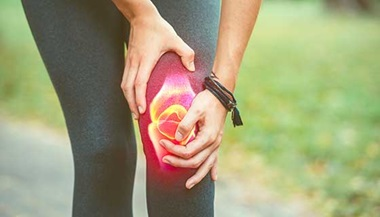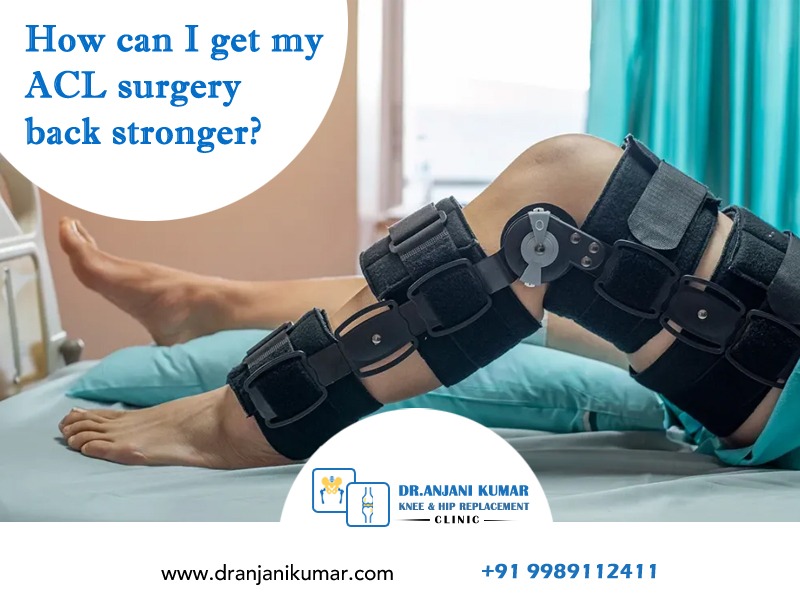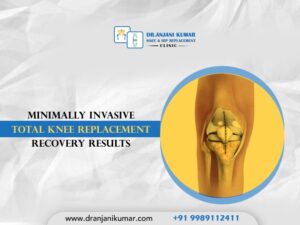The human body is an incredible and intricate system that can function in unison to support a healthy and active lifestyle. However, as we age and are exposed to various stimuli, our bodies alter, which can lead to health issues. Bruising During Stress One of the most common internal health issues brought on by stress is inflammation. Worry leads to chronic stress, which increases the risk of inflammation. The same inflammation may cause your joints to expand, making movement more uncomfortable.
ACL injury:
An injury to the anterior cruciate ligament, one of the important ligaments in the knee joint, is an ACL (anterior cruciate ligament) injury. The ACL stabilises the knee to keep the tibia (shinbone) and femur (thigh bone) from moving excessively forward.
ACL injuries frequently happen while playing sports that require quick stops, direction changes, jumping, or rotating. They can be caused by different processes, including a clumsy landing, an abrupt stop, a direct blow to the knee, or an abrupt knee twist while the foot is still firmly on the ground.

ACL injuries are more frequent among athletes who compete in gymnastics, football, basketball, soccer, and skiing. However, accidents or falls can also cause them in people who are not athletes.
The following signs of an ACL injury include:
- Popping feeling at the scene of the accident.
- The knee immediately starts to swell.
- Extreme discomfort.
- Instability or a sensation that the knee is giving way when moving.
- Walking or putting weight on the afflicted limb may be difficult.
ACL damage is typically identified using a combination of physical examination, medical history, and imaging tests like an MRI.
The severity of the rupture, the patient’s level of activity, and the presence of additional injuries all affect how an ACL injury is treated. Other possibilities for treatment include surgical restoration of the ACL using grafts to restore stability to the knee joint, as well as conservative maintenance with physical therapy and rehabilitation activities.
For the knee to restore strength, stability, and range of motion and avoid complications or reinjury, rehabilitation is crucial following an ACL injury. It frequently entails a regimented program overseen by a physical therapist.
ACL injuries can happen to anyone, regardless of their age or level of activity.
Certain groups are more likely to sustain them:
Athletes: ACL injuries are common among athletes who play sports that require quick stops, turning, jumping, or direction changes. ACL injuries are more common in sports like rugby, basketball, football, skiing, gymnastics, and basketball. Due to demanding activities, rigorous training, and probable collisions with other players, athletes frequently suffer these injuries.

Active people: People who participate in recreational hobbies or physical pursuits that require motions comparable to those seen in sports, such as hiking, running, or taking fitness courses, can also get ACL injuries. ACL injuries during these sports might result from sudden movements or mishaps.
Women: Research has revealed that compared to men, women are more likely to sustain an ACL injury. Although the precise causes are not entirely understood, the higher risk in women may be due to hormonal differences, anatomical anomalies, muscle imbalances, and movement patterns.
Young adults and adolescents: Young adults and adolescents participating in sports frequently sustain ACL injuries. Their involvement in high-intensity sports, growth spurts that could momentarily impair coordination, or others could be to blame.
While ACL injuries are more common in these populations, it’s vital to remember that anyone can sustain one, regardless of age, gender, or degree of activity. ACL injuries can be prevented by using appropriate training methods, conditioning regimens, warm-up exercises, and maintaining a healthy level of physical fitness.
Ways to get stronger after an ACL operation:
Following ACL (anterior cruciate ligament) surgery, the course of recovery depends heavily on regaining strength.
The following actions can assist you in effectively regaining your strength:
The main goal of exercising after surgery is to strengthen the ACL ligament. Thus, consistently abiding by the physiotherapist’s recommendations to resume your desired career is crucial. Following ACL (anterior cruciate ligament) surgery, adhering to an extremely tight recuperation regimen, and engaging in targeted exercises and activities that strengthen the muscles around the knee.
- Start with range-of-motion exercises
- Strengthen the quadriceps and hamstrings
- Engage in closed-chain exercises
- Incorporate balance and proprioception training
- Increase functional activities gradually
- Cross-train and incorporate cardiovascular exercises
- Don’t neglect core and hip strength
Although there is no set period, the following general rules apply:
Initial phases (0–4 weeks): Reduced discomfort and swelling, restoring range of motion, and gradually introducing weight-bearing activities are the main goals of the initial phase. Simple strengthening exercises that concentrate on the quadriceps, hamstrings, and other knee-related muscles may be introduced.
Mid-stage (4–12 weeks): Improve stability and muscular function. This stage usually entails more strenuous strengthening activities. Resistance training, balancing exercises, and more dynamic movements may eventually be included in strengthening workouts.
Late stage (12+ weeks): At this point, the focus changes to functional exercises, advanced strengthening, and training for specialised sports. Exercises get harder and more tailored to the person’s objectives and activities. The goal is often to return to sports or high-level activities within this time. However, this can change based on the patient’s progress and the healthcare team’s recommendations.
Remember to speak with your physical therapist or healthcare provider for specific advice and support as you recover. Depending on your particular requirements and level of rehabilitation, they can offer tailored exercises and progressions. Working closely with your physical therapist or other healthcare provider will help you create a unique plan tailored to your needs and rehabilitation stage. You will be led through the proper progressions and exercises to strengthen your knees safely and effectively.
Ways to strengthen the ACL ligament after surgery:
It’s crucial to remember that exercise or other methods cannot directly increase the strength of ligaments, particularly the ACL (anterior cruciate ligament). Ligaments are thick bands of connective tissue that stabilise joints. Their natural composition and structure dictate how strong they are.
However, there are things you can do to assist and safeguard your ACL as well as the knee joint as a whole.
The following tactics are highlighted:
Strengthen the surrounding muscles: Although the ACL cannot be strengthened, you can concentrate on bolstering the muscles surrounding the knee joint. Lessens the load on the ligaments by helping to stabilise and support the knee. The quadriceps, hamstrings, glutes, and hip muscles should all be worked on during exercises. To create an appropriate strength training program, speak with a physical therapist.
Improve balance and proprioception: Enhance your proprioception and balance to increase joint stability and lower your risk of injury. The sense of where your body is in space is known as proprioception. Include balance-testing activities into your routine, such as single-leg stances, stability ball exercises, and balance board exercises.
Maintain flexibility: Keeping the muscles surrounding the knee and the entire lower body flexible will help to improve joint function and lessen the strain on the ligaments. Give your thighs, hamstrings, and calves regular stretching to keep them flexible.
Use the right technique when exercising: To lower the danger of sudden movements or forces that could strain the ACL, use proper body mechanics and technique. Includes safe manoeuvres, controlled rotating, and appropriate landing procedures.
Warm-up and cool down: Before participating in physical activities or sports, warm up properly to get your muscles and joints ready for the demands of the activity. Then, cool down. Similarly, to retain flexibility and aid recovery, cool down and stretch after working out.
Wear the proper footwear and safety equipment: For actions that require the foot and ankle to be supported and stabilised, use the appropriate footwear. Consider wearing protective equipment, such as knee braces or athletic tape, when engaging in high-risk sports or activities to provide additional support and lower the risk of injury.
Avoid overexertion by paying attention to your body: During physical activity, pay attention to any indicators of exhaustion, pain, or discomfort. Don’t push yourself past your limits; give your body enough time to relax and recover.
Always seek advice from a medical practitioner, such as an orthopaedic specialist or physical therapist, if you have concerns about your ACL or knee joint. They may offer specialised advice based on your unique situation.
What strengthens ACL surgery?
Anterior cruciate ligament (ACL) surgery treats or replaces an ACL injury in the knee. Surgery aims to give the knee joint stability and functionality again. Even though the surgery does not strengthen the ACL, it aids in the ligament’s rebuilding or repair to increase stability and ward off additional damage.
The following elements affect the efficiency and potency of ACL surgery:
The technique of surgery: The surgical approach chosen will depend on the unique circumstances of each patient, including the extent of the ACL injury, any coexisting injuries, and the surgeon’s level of experience. ACL reconstruction using autografts (tissue from the patient’s own body) or allografts (donor tissue), as well as ACL repair in some circumstances, are common surgical methods. The surgeon’s expertise and experience significantly influence the success and durability of the surgical treatment.
Rehabilitation and physical therapy: Physical therapy and rehabilitation are essential after ACL surgery to help the knee restore its strength, stability, and functionality. Physical therapy focuses on improving balance and proprioception, strengthening the muscles around the injured area, and gradually reintroducing functional activities. Adherence to the rehabilitation program and regular collaboration with a physical therapist is crucial for optimum recovery and long-term strength.
Muscular strength and stability: The surrounding muscles’ strength and stability affect the knee joint’s strength and stability. Exercises designed for rehabilitation after ACL surgery strengthen and stabilise the quadriceps, hamstrings, glutes, and other muscles. Strong knee muscles can support the joint more firmly and compensate for the ACL’s lack of function.
Technique: When undergoing rehabilitation after ACL surgery, it’s crucial to use the right methods and adhere to the rules. Entails using the right form and alignment while exercising, properly pacing workouts and other activities, and avoiding excessive tension or stress on the tissues recovering. The long-term strength of the knee is influenced by following the recommended rehabilitation program and avoiding activities that could jeopardise the surgical repair or reconstruction.
Time and patience: The healing process and recovery period following ACL surgery can vary depending on the patient. It is crucial to give the surgery site enough time to heal, the repaired or replaced ACL enough time to integrate and strengthen, and the surrounding tissues enough time to recuperate. A stronger knee will be produced over time by adhering to the suggested post-surgery recommendations, partaking in appropriate rehabilitation, and gradually resuming activities under the supervision of healthcare professionals.
It’s crucial to remember that even though ACL surgery can help the knee regain stability and functionality, it cannot completely guarantee against future injuries. Maintaining long-term knee health and lowering the risk of reinjury require constant care, rehabilitation, and maintenance of muscular strength and flexibility. An orthopaedic surgeon or physical therapist you consult with can offer personalised advice and suggestions depending on your particular situation.
Depending on the patient and the unique circumstances of their accident and treatment, ACL surgery can differ. Always consult your healthcare physician for specific advice on accelerating your ACL healing.
Knee replacement surgery may be recommended in advanced cases, especially if the joint has collapsed or the bone has become severely deformed.
Dr Anjani Kumar has 20 years of experience and successfully performed 2000 knee replacement surgeries, 350 hip replacement surgeries, and 500 pelvic acetabular surgeries throughout his career. Please get in touch with us on Mobile: at +91 9989112411 and by E-mail: anjanikumar@ gmail.com




